The Vermont Statutes Online
The Statutes below include the actions of the 2025 session of the General Assembly.
NOTE: The Vermont Statutes Online is an unofficial copy of the Vermont Statutes Annotated that is provided as a convenience.
Title 12: Court Procedure
Chapter 195: Nuisance Suits Against Agricultural Activities
§ 5751. Legislative findings and purpose
The General Assembly finds that agricultural production is a major contributor to the State’s economy; that agricultural lands constitute unique and irreplaceable resources of statewide importance; that the continuation of existing and the initiation of new agricultural activities preserve the landscape and environmental resources of the State, contribute to the increase of tourism, and further the economic welfare and self-sufficiency of the people of the State; and that the encouragement, development, improvement, and preservation of agriculture will result in a general benefit to the health and welfare of the people of the State. In order for the agricultural industry to survive in this State, farms will likely change, adopt new technologies, and diversify into new products, which for some farms will mean increasing in size. The General Assembly finds that agricultural activities are potentially subject to lawsuits based on the theory of nuisance and that these suits encourage and could force the premature removal of the farmlands and other farm resources from agricultural use. It is the purpose of this chapter to protect reasonable agricultural activities conducted on the farm from nuisance lawsuits. (Added 1981, No. 68, eff. May 1, 1981; amended 2003, No. 149 (Adj. Sess.), § 12, eff. June 3, 2004; 2025, No. 61, § 1, eff. July 1, 2025.)
§ 5752. Definitions
As used in this chapter:
(1) “Agricultural activity” means, but is not limited to:
(A) the cultivation or other use of land for producing food, fiber, Christmas trees, maple sap, or horticultural and orchard crops; the raising, feeding, or management of domestic animals as defined in 6 V.S.A. § 1151 or bees; the operation of greenhouses; the production of maple syrup; the on-site storage, preparation, and sale of agricultural products principally produced on the farm; and the on-site production of fuel or power from agricultural products or wastes principally produced on the farm;
(B) the preparation, tilling, fertilization, planting, protection, irrigation, and harvesting of crops; the composting of material principally produced by the farm or to be used at least in part on the farm; the ditching and subsurface drainage of farm fields and the construction of farm ponds; the handling of livestock wastes and by-products; and the on-site storage and application of agricultural inputs, including lime, fertilizer, and pesticides;
(C) “farming” as defined in 10 V.S.A. § 6001; and
(D) “agricultural activities” as defined in 6 V.S.A. § 4802.
(2) “Generally accepted agricultural practices” mean:
(A) the requirements of 6 V.S.A. chapter 215, including permit requirements or requirements of the Required Agricultural Practices, where applicable;
(B) the requirements of an active Concentrated Animal Feeding Operation permit issued under 10 V.S.A. chapter 47, where applicable;
(C) the requirements of the Agency of Agriculture, Food and Markets’ Vermont Rule for Control of Pesticides; and
(D) practices conducted in a manner consistent with proper and accepted customs and standards followed by similar operators of agricultural activities in the State.
(3) “Good standing with the State” means a person conducting an agricultural activity that is the basis of a nuisance claim does not have an active, unresolved enforcement violation stemming from the agricultural activity at issue that has reached a final order with the Secretary of Natural Resources or the Secretary of Agriculture, Food and Markets. (Added 1981, No. 68, eff. May 1, 1981; amended 2003, No. 149 (Adj. Sess.), § 12, eff. June 3, 2004; 2021, No. 162 (Adj. Sess.), § 12, eff. June 1, 2022; 2025, No. 61, § 1, eff. July 1, 2025.)
§ 5753. Agricultural activities; protection from nuisance lawsuits
(a) No agricultural activity shall be or become a nuisance when the activity is conducted in accordance with generally accepted agricultural practices.
(b)(1) In order to assert nuisance protection under this chapter, a person conducting an agricultural activity shall demonstrate that the person is in good standing with the State. A person may demonstrate good standing by providing letters of good standing to a court from the Secretary of Agriculture, Food and Markets; the Secretary of Natural Resources; or both secretaries, as relevant to the nuisance claim.
(2) A plaintiff alleging that an agricultural activity is a nuisance shall have the burden of proving by a preponderance of the evidence that:
(A) the agricultural activity at issue is not entitled to the nuisance protection provided for under subsection (a) of this section because the agricultural activity is not conducted in accordance with generally accepted agricultural practice; and
(B) if the plaintiff proves the agricultural activity is not entitled to nuisance protection under subsection (a) of this section, the required elements of their nuisance claim.
(c) The nuisance protection for an agricultural activity provided for under subsection (a) of this section shall not apply if the plaintiff demonstrates one or more of the following:
(1) A nuisance violation results from the negligent operation of an agricultural activity.
(2) The agricultural activity has a substantial adverse effect on health, safety, or welfare based upon objective, documented medical or scientific evidence that the agricultural activity was the proximate cause of the alleged effect.
(3) A reasonable person would find that the agricultural activity was a proximate cause of a noxious and significant interference with the use and enjoyment of the neighboring property.
(d) This chapter shall not restrict or impede the authority of the State to protect the public health, safety, environment, or welfare. (Added 1981, No. 68, eff. May 1, 1981; amended 2003, No. 149 (Adj. Sess.), § 12, eff. June 3, 2004; 2025, No. 61, § 1, eff. July 1, 2025.)
§ 5754. Liberal construction; severability
(a) This chapter is remedial in nature and shall be liberally construed to effectuate its purposes.
(b) If any provision of this chapter is held invalid, the invalidity does not affect other provisions of this chapter that can be given effect without the invalid provision, and for this purpose, the provisions of this chapter are severable. (Added 2003, No. 149 (Adj. Sess.), § 12, eff. June 3, 2004; amended 2025, No. 61, § 1, eff. July 1, 2025.)
§ 5754a. Required mediation prior to suit
(a) A person shall not bring a court action based on a claim of nuisance arising from an agricultural activity unless the person and the operator of the agricultural activity, at least once, attempt to resolve through mediation the issue or dispute that the person has concerning operation of the agricultural activity. The mediation shall be conducted according to the provisions of the Uniform Mediation Act set forth in chapter 194 of this title.
(b) The parties to the mediation may agree upon the use of a mediator to assist in the resolution of the agreed-upon issue or dispute, and the parties shall share the cost of the mediator equally or according to an agreement between the parties. If the parties to the mediation are unable to resolve the relevant issue or dispute through mediation, the parties may agree to submit the issue or dispute to binding arbitration pursuant to chapter 192 of this title and shall share the cost of the arbitration.
(c) A person bringing a court action based on a claim of nuisance arising from an agricultural activity shall provide the court with a sworn statement of an attempt to resolve the issue or dispute through mediation. (Added 2025, No. 61, § 1, eff. July 1, 2025.)

